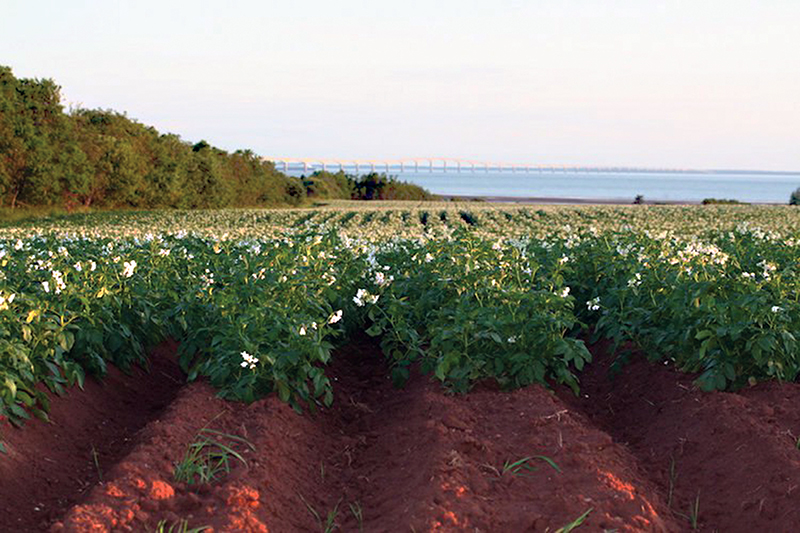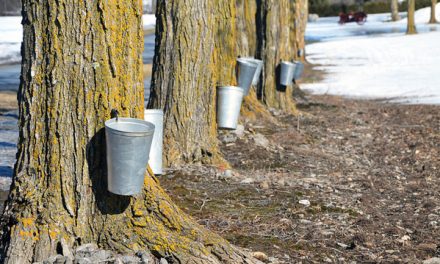Courtesy Photo
The American blocking of the sale of Prince Edward Island potatoes continues.
In January of 2021, Marie-Claude Bibeau, Canadian Minister of Agriculture and Agri-Food, met with her counterparts in Washington to try and find a way to resolve the PEI potato issue.
Some progress has been made, but an overall resumption of the sale of PEI table stock potatoes to the United States, is still a long way off. Currently the United States has agreed to allow the sale of the potatoes to Puerto Rico but not to the United States itself.
As a result, potato farmers in PEI have been left with huge crops of potatoes that have been harvested but cannot be sold. The destruction of these potatoes has begun.
On Feb. 22, Greg Donald the manager of the Prince Edward Island Potato board said, “The border suspension was removed into Puerto Rico only. The first shipment of PEI potatoes left a week ago last Friday and will arrive in Porto Rico today.”
The sales to Puerto Rico will not be enough to hold off the loss to PEI potato farmers.
“Potato producers have been destroying good potatoes for the last week or so. With available destruction funding, 300 million lbs will be destroyed by next week,” said Donald.
“We are still waiting on news regarding the border suspension for the continental United States.”
The Canadian Food Inspection Agency (CFIA) had suspended the certification or suspension of exports of potatoes from Prince Edward Island to the United States market.
The decision was based on the discovery of potato wart in some potatoes on the island.
The suspension was triggered by the United States.
Even though the discovery of potato wart in a few fields in PEI has been to many greatly exaggerated, the United States would not budge on their decision to refuse entry of the potatoes into their country.
On Feb. 8, a breakthrough was made with United States agreeing to allow PEI potatoes to be sold in Puerto Rico beginning Feb. 9.
A press release from Agriculture and Agri-Food Canada stated: “The Government of Canada has been taking a science-based approach with the United States to provide the necessary assurances, that would allow for the resumption of trade for PEI’s high-quality fresh potatoes. The Canadian Food Inspection Agency (CFIA) is working with industry to implement the import requirements for Puerto Rico, including labelling and traceability.”
PEI’s exports of table stock potatoes to Puerto Rico has been valued at being worth $12 million.
The same press release stated: “The United States Animal and Plant Health Inspection Service (APHIS) is also currently working expeditiously on their analysis for importing PEI table stock potatoes to the continental United States.
The Canadian Food Inspection Agency (CFIA) continues to have regular technical discussions with APHIS to provide the necessary scientific data and information to resume trade.
On Nov. 2021, The United States Department of Agriculture (USDA) Animal and Plant Health Inspection Service (APHIS) advised U.S. border services to reject shipments of PEI potatoes. As a result, the CFIA was not able to certify shipments of the PEI potatoes to be shipped to the United States.
Minister Bibeau said after the latest agreement about the news, about shipping potatoes to Porto Rico “The United States re-opening access to Puerto Rico is good news for our potato growers, and good news for Prince Edward Island. It has been an incredibly difficult few months, and this is a vitally important first step to resuming trade. We have been doing everything we can to get our world-class potatoes moving back across the border, and we’ll keep fighting to restore access to the rest of the U.S. market.”
Minister Bibeau said in a press release on the issue of the destruction of potatoes in PEI: “Agriculture and Agri-Food Canada PEI farmers put everything that they have into their crops, and many families’ livelihoods depend on this industry. I know the disruption to trade, due to the United States’ concerns over potato wart has touched the lives of so many Islanders, from multi-generational family farms, to packers, processors, shippers, and more.
What should have been a great year for PEI—a bumper crop and favourable market conditions— has turned into an incredibly difficult one.”
Bibeau agreed the restored trade with Puerto Rico would help some farmers but not all.
“We know there is more work ahead, and that is why we will continue to engage at every level with the Americans to further restore trade for PEI potatoes to the United States. Unfortunately, we have come to the point where some of the surplus potatoes are starting to be destroyed.
Through the Surplus Potato Management Response plan, we’re diverting as many potatoes as possible to food banks, dehydration plants, processors, and other markets to minimize the amount of surplus potatoes that must be destroyed. For potatoes that cannot be diverted, producers will receive up to 8.5 cents a pound to assist with the costs of destruction of potatoes in an environmentally sound manner.”
History of the potato wart issue
Potato wart is a soil-borne fungus that can remain dormant in a field for more than 40 years. It has no negative effects on human health or food safety; however, it can have an impact on the economic return for potato growers by reducing yield and making potatoes unmarketable. Table stock potatoes are washed before export, and a sprout inhibitor is applied, further minimizing the risk of spreading potato wart. Under Canada’s Plant Protection Regulations, the CFIA may only issue export certificates if the requirements of the importing country are met.
On Nov. 22, 2021, the United States Department of Agriculture (USDA) instructed their border services to refuse entry of any shipment of seed, table and processing potatoes from PEI.
On Dec. 20, 2021, the Canadian government announced up to $28 million to help PEI potato producers manage surplus potatoes.
Producers have access to Agriculture and Agri-Food Canada’s suite of Business Risk Management (BRM) programs to help them manage risks that threaten the viability of their farm. These programs are 60:40 cost-shared between the federal government and the province.













